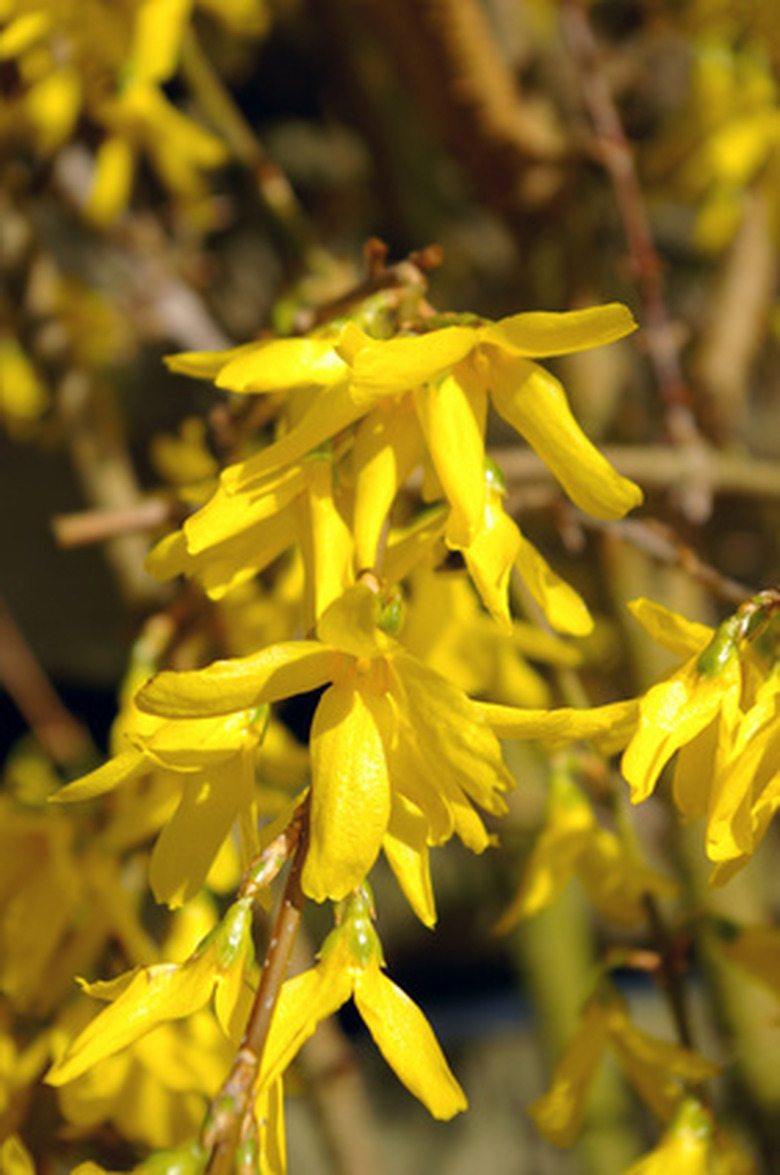How To Transplant Forsythia
Things Needed
- Pruning shears
- Shovel
Forsythia shrubs are also known as golden bell, for the dark-yellow or golden-colored blooms they produce in early spring before their leaves emerge. You can force forsythia blooms to open indoors in late winter, giving your home an attractive and cheerful floral arrangement while the garden is still asleep. A forsythia bush can grow up to 2 feet per year and it's easy to transplant. You can plant a forsythia by itself or in multiples to make a hedgerow.
Step 1
Transplant your forsythia with burlap-wrapped roots in the early fall if possible, as this will give the plant the best chance of thriving. Container plants do well being transplanted anytime between the early fall and late spring months.
Step 2
Water the root ball so that it stays evenly moist until it's time to plant it. Remove the forsythia carefully from the container or root ball wrappings. Keep as much soil as possible around the roots.
- Forsythia shrubs are also known as golden bell, for the dark-yellow or golden-colored blooms they produce in early spring before their leaves emerge.
- Transplant your forsythia with burlap-wrapped roots in the early fall if possible, as this will give the plant the best chance of thriving.
Step 3
Clip or gently pull apart any roots that are crowded tightly around the root ball or that encircle it. This will allow plenty of circulation so that the roots can absorb the nutrients and moisture from the soil.
Step 4
Select a location in your yard that receives full to partial sunlight and that is 8 to 10 feet from other plants or shrubs. Make sure the soil is well drained in the area you select.
Step 5
Dig a sloping saucer-shaped hole that is slightly larger than the root ball diameter, according to the Yardener website. Loosen the sloping edges along the sides, but to not allow any loose dirt to fall to the bottom of the hole.
Step 6
Place the forsythia in the hole. Make sure that the top portion of the root ball is even with or slightly taller than the surrounding ground level.
- Clip or gently pull apart any roots that are crowded tightly around the root ball or that encircle it.
- Loosen the sloping edges along the sides, but to not allow any loose dirt to fall to the bottom of the hole.
Step 7
Place some of the dirt you dug out of the hole back into it. Press firmly as you fill the hole to ground level to prevent air pockets in the dirt. Water the plant thoroughly to give it a good start and then regularly to avoid allowing the soil to get dry to the touch. This will help the plant establish itself.
Tip
Cut off a forsythia branch that has new growth on it in order to share it with a friend. Select a branch that is 3 to 6 inches long. Plant the forsythia cutting into a pot with moist potting soil. Water the soil on a regular basis to prevent it from drying out while it is developing new roots. The new cutting will thrive if the soil remains evenly moist. Transplant your new forsythia plant whenever it has established good roots. This should take approximately 3 to 4 weeks.
